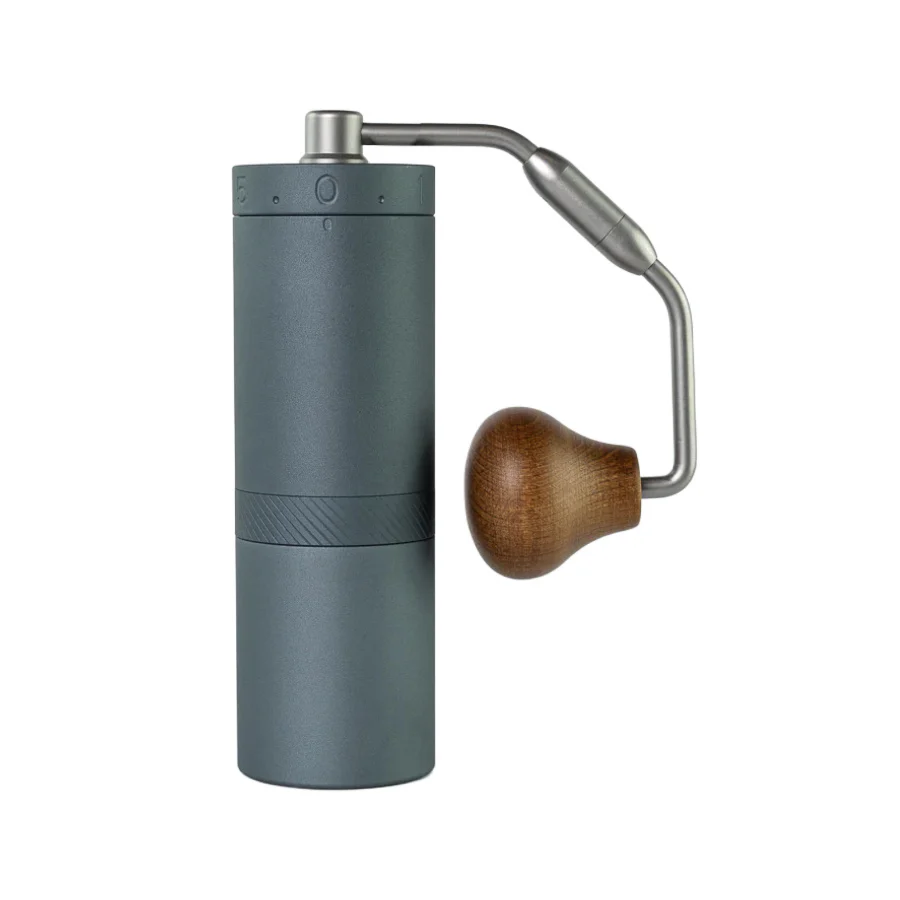The Ultimate Grinding Friend: 1Zpresso J-Ultra Coffee Grinder
The Ultimate Grinding Friend: 1Zpresso J-Ultra Coffee Grinder
Blog Article
Master the Art of Grinding Coffee Beans: A Guide to Coffee Grinders
For coffee enthusiasts, the process of grinding coffee beans is even more than simply a regular task; it is an art kind that can substantially affect the taste and top quality of the final mixture. Comprehending the subtleties of different mill kinds, choosing the appropriate work dimension, and using the right methods are essential actions towards attaining that perfect mug of coffee.
Kinds Of Coffee Grinders
There are 3 main sorts of coffee grinders commonly made use of by coffee enthusiasts: blade grinders, burr mills, and hands-on mills. Blade mills are the many fundamental kind, making use of a simple blade to cut the coffee beans. While they are inexpensive and very easy to make use of, they frequently lead to unequal coffee grounds because of irregular grinding. Burr grinders, on the other hand, offer more accuracy by crushing the beans in between a relocating grinding wheel and a non-moving surface area. This results in a consistent grind size, which is essential for a consistent coffee taste. Burr grinders can be found in both level and cone-shaped forms, each offering a little various grinding qualities.
Hands-on mills, as the name recommends, require manual effort to grind the coffee beans. Each type of coffee grinder has its advantages and ideal use situations, catering to the diverse choices of coffee fanatics.

Picking the Right Work Dimension
With an understanding of the different kinds of coffee grinders, the next vital step in attaining the ideal cup of coffee is picking the best grind size. The grind size plays a significant function in establishing the taste account of your coffee (1Zpresso J-Max). Various brewing techniques need certain grind dimensions to optimize the removal of flavors from the coffee grounds
For a crude grind, suitable for French press and cool brew approaches, the coffee beans must look like breadcrumbs, supplying a robust and bold taste. Medium-coarse grinds, suitable for Chemex or Clever Dripper, have an appearance similar to crude sand, using a balanced taste.
Tool grinds, typically used in drip coffee machine, have an uniformity resembling routine sand, leading to an all-around taste. Fine grinds, best for coffee makers, are akin to salt, yielding a rich and intense preference. Extra-fine grinds, used in Turkish coffee, are as great as powdered sugar and create a strong and potent brew.
Grinding Techniques for Optimal Flavor
To draw out the fullest possibility of flavor from your coffee beans, mastering proper grinding techniques is essential. Consistency is crucial when it involves grinding coffee beans for optimal taste. Guaranteeing that the coffee beans are ground uniformly is crucial to achieve a balanced removal throughout the brewing procedure. One of the essential strategies for improving flavor is to readjust the grind dimension based on the brewing technique being made use of. For instance, a great grind is optimal for coffee devices, while a rugged work is better for French press developing. Furthermore, the important link grinding time plays a substantial duty in taste removal. Over-grinding can bring about a bitter taste, while under-grinding may cause a sour taste. It is advised to experiment with different work dimensions and brewing times to find the excellent equilibrium that suits your preference choices. By my website focusing on these grinding techniques, you can elevate the flavor profile of your coffee and take pleasure in a much more satisfying mug whenever.
Upkeep and Cleaning Tips

Along with regular cleansing, it is vital to evaluate your mill for any type of indications of wear or damages. Check the blades, burrs, and various other elements for any kind of monotony or malfunctions. Change any type of worn-out components quickly to preserve the high quality of your coffee work. Lastly, shop your grinder in a completely dry and tidy environment to avoid any kind of moisture or dust from influencing its performance. By adhering to these maintenance and cleaning tips, you can ensure that your coffee grinder proceeds to provide scrumptious freshly ground coffee for many years to find.
Troubleshooting Common Grinder Issues


Ensuring your coffee grinder operates smoothly needs proficient troubleshooting of usual issues that might emerge throughout its usage. One usual trouble with coffee grinders is irregular work size.
An additional constant issue is grinder clogging. This can happen when oils from the coffee beans accumulate and obstruct the grinder's chute. To solve this, dismantle the grinder and tidy all components extensively, paying special focus to link the chute and burrs. Furthermore, bear in mind overfilling the hopper to stop obstructions.
Last but not least, if your mill is generating too much noise throughout procedure, it could show an issue with the motor or interior components. In such situations, it is a good idea to seek advice from the manufacturer's instructions for fixing steps or look for specialist assistance to identify and correct the concern immediately.
Conclusion
Finally, understanding the art of grinding coffee beans includes recognizing the different sorts of coffee mills, selecting the right work size, making use of proper grinding techniques for optimum flavor, and keeping and cleaning the mill on a regular basis. By following these guidelines and repairing common grinder issues, coffee lovers can raise their coffee developing experience and delight in a delicious cup of coffee whenever.
Report this page